Think of grown-ups throwing fruit and veggies at each other just for the sake of pure fun, of children spreading bright powders all around so much they’re all painted, of art installations that look like a set of a fantasy movie, of bathing, swimming and playing in the mud. People do these things. They can be mature most of the year, hard-working and responsible, but when the crazy festivals begin; all the serious matters are put aside. Here’s a list of 5 of the world’s craziest, most colorful and chaotic festivals around the World.
-
Table of Contents
La Tomatina
Where: Buñol, Spain
When: August 26, 2015
La Tomatina isn’t very colorful. It’s just red. Once the festival begins, everything becomes as red as a tomato. Each year, on the last Wednesday of August, the small Spanish town turns into a messy playground. The game only lasts one hour, but about 150,000 tons of tomatoes are being used. Participants just pelt each other with tomatoes for fun. The veggies (or rather fruit, since botanically tomatoes aren’t vegetables) are delivered by trucks that enter the Plaza del Pueblo when the fight is about to begin. There are several rules: the tomatoes must be squashed so that nobody gets hurt, nothing else besides tomatoes can be thrown, and after the fight is over (the end is indicated by a shot), no tomato can be in the air.
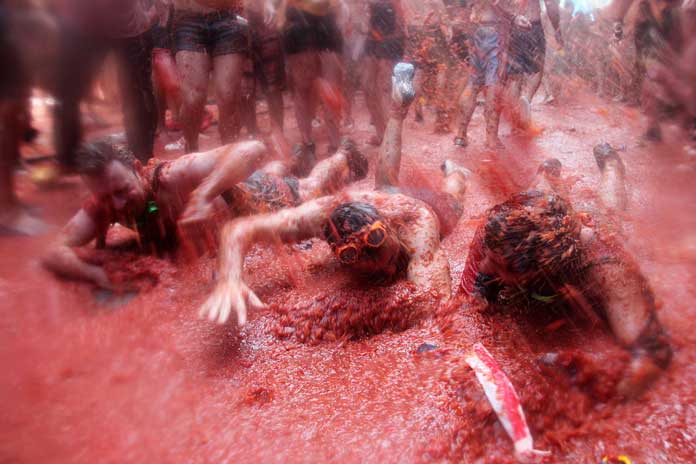
Photo: Wikimedia
-
Boryeong Mud Festival
Where: Boryeong, South Korea
When: July 17 – 25, 2015
If you’re from a rainy country, then you probably remember the happiness of being a child, jumping into the mud and getting all dirty. The only problems were caused by parents complaining about how much laundry had to be done because of your childish whims. Thanks to the Boryeong Mud Festival, you can feel like a kid again. The festival lasts a week, but its final weekend is the most important part. All the mud is brought from the Boryeong mud flats and used to create a variety of attractions. There are mud pools and slides, body painting with colored clay, skiing, gold and badminton competitions. A stage is placed on the beach, so once you’re already painted, you can listen to live music or watch mimes performing. In the meantime, wellness clinics offer mud massages and other treatments.
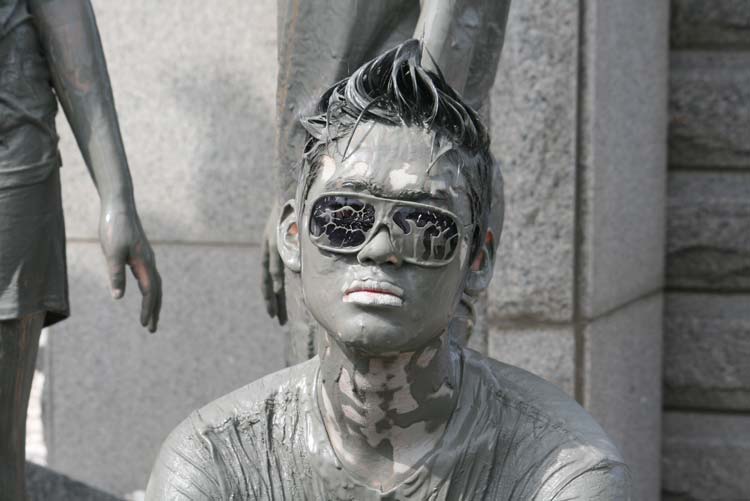
Photo: Flickr
-
Holi Color Festival
Where: The festival originates from India and Nepal, but it has recently spread around Europe and North America.
When: The dates vary each year according to the Hindu calendar. It’s usually celebrated at the end of February or in March.
The primary goal of Holi is to celebrate the arrival of Spring and saying goodbye to Winter. In Hinduism, it also has a religious significance. A night before the celebration of colors, people lit bonfires. The ceremony is called Holika Dahan, which means “Burning of Holika” (Holika is a demoness in Hindu tradition). As for the festival of colors itself, as soon as it starts, both children and adults spray colored powder at each other, and it only takes a moment until everyone looks like an embodiment of rainbow. The Festival of Colors has become very popular across Europe and America, so now many major cities held their celebrations. The Western variety doesn’t have a religious meaning; it’s rather about gathering people together, playing and letting loose.
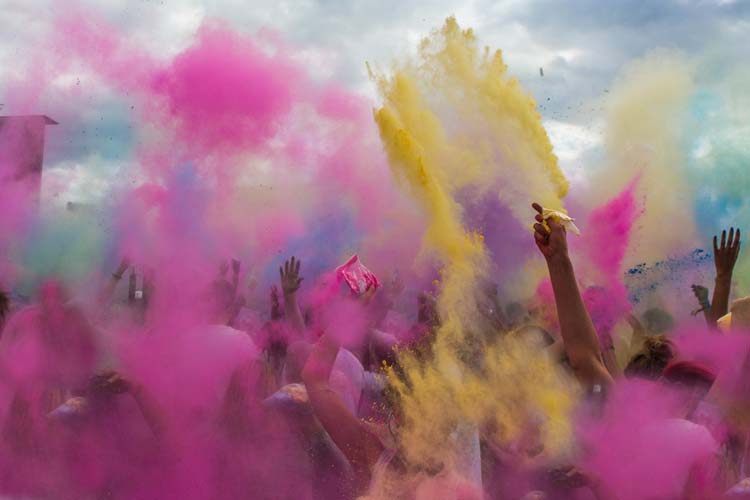
-
Battle of the Oranges
Where: Ivrea, Italy
When: The battle takes place during the Ivrea Carnival. The Carnival’s held in February. It lasts three days and ends on the Shrove Tuesday.
At first glance the Battle of Oranges looks just like madness: people throw fruit at each other, some of them ride open horse-drawn wagons full of oranges, and others walk the streets. Everyone’s dirty, loud and happy. Surprisingly, there’s a symbolic meaning behind this chaos. Hundreds of years ago, in the 12th or 13th century, a courageous miller’s daughter defended herself from a man who tried to rape her on the eve before her wedding. According to the Droit du seigneur right that allowed feudal lords to have sexual relations with commoners whenever they fancied so, the girl was obliged to agree. She refused and killed the man in self-defense. After that, a revolt began, and the residents of the town burnt the tyrant’s palace. Now, during the carnival, pedestrians represent revolting masses, throwers situated on the wagons symbolize the guards of nobility, while oranges pretend to be guns and stones.
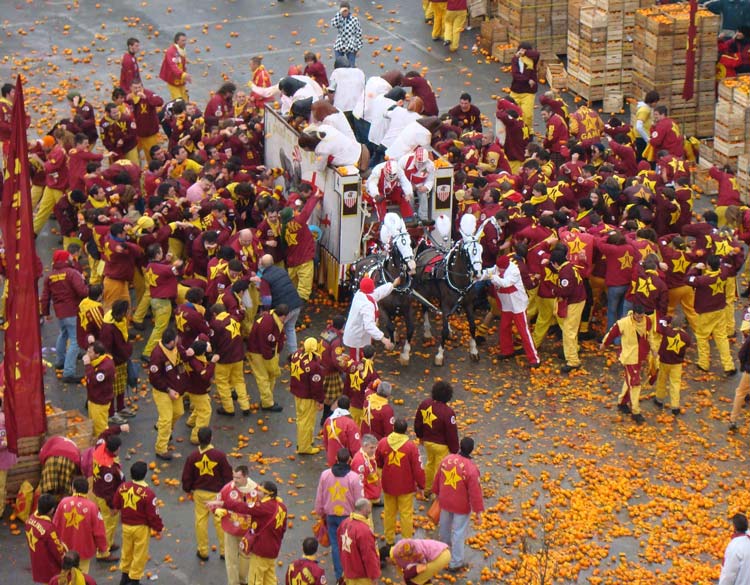
Photo: Wikimedia
-
Burning Man
Where: Black Rock Desert, Nevada, Arizona
When: The festival begins on the last Wednesday of August and ends on the first Monday of September.
Insanity, creativity and freedom, that’s what Burning Man’s mostly about. It’s experimental, artsy, alternative, hippie and messy. Some of its ten principles include radical self-reliance, radical self-expression, communal effort and civic responsibility. For a few days, the Black Rock Desert turns into a colorful show. People dress up (some of them very imaginatively) or undress (clothing’s optional, although most participants do wear at least something). Weird vehicles ride and park on the sand. Artists prepare incredible installations. What has been an empty dessert looks like setting straight from a mad man’s dream. Of course, there are also lots of unique activities and attractions.
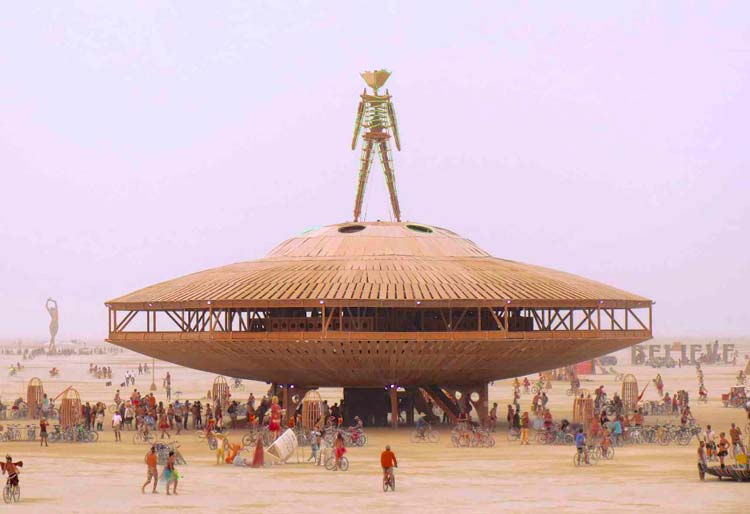
Photo: Flickr
Which one of these festivals around the World would you like to visit the most? Let us know! And share this article with your friends.




